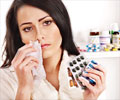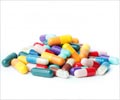- Erythema Multiforme. Medline Plus. Medical Encyclopedia. Web June 16th 2016. - (https://www.nlm.nih.gov/medlineplus/ency/article/000851.htm)
- Stevens-Johnson Syndrome. Mayo Clinic. Diseases and Conditions. Web June 16th 2016. - (http://www.mayoclinic.org/diseases-conditions/stevens-johnson-syndrome/basics
/definition/con-20029623) - Erythema Multiforme. KidsHealth. For Parents. Web June 17th 2016. - (http://kidshealth.org/en/parents/erythema-multiforme.html)
- Erythema. International Atomic Energy Agency. Radiation Protection of Patients (RPOP). Web June 17th 2016. - (https://rpop.iaea.org/RPOP/RPoP/Content/InformationFor/HealthProfessionals/5_InterventionalCardiology/erythema.htm)
- Erythema Annulare Centrifugum - (https://en.wikipedia.org/wiki/Erythema_annulare_centrifugum)
- Skin care: 5 tips for healthy skin. Adult Health. Mayo Clinic. Web June 18th 2016. - (http://www.mayoclinic.org/healthy-lifestyle/adult-health/in-depth/skin-care/art-20048237?pg=1)
- Toxic Epidermal Necrolysis. Hopkins Medicine. Health Library. Web June 16th 2016. - (http://www.hopkinsmedicine.org/healthlibrary/conditions/dermatology/toxic_epidermal_necrolysis_85,P00321/)
- Toxic Epidermal Necrolysis (TENS). Skin Association. Assisting those affected by Stevens-Johnson Syndrome. Web June 16th 2016. - (http://www.skinassn.org/toxic-epidermal-necrolysis.html)
- Erythema Nodosum: A Sign of Systemic Disease - (http://www.aafp.org/afp/2007/0301/p695.html)
What is Erythema?
Erythema literally means redness. It includes skin conditions associated with redness or a skin rash.
It is typically caused by an infection or allergic reaction and may range from a mild skin rash to a life-threatening emergency.

What are the Types of Erythema?
There are various types of erythema, of which erythema multiforme is the most common. Each type of erythema has a different cause, and therefore needs different treatments. Some forms of erythema include:
- Erythema multiforme (EM), which occurs due to an allergic reaction to medications or infection
- Erythema nodosum (EN), which is characterized by nodular eruptions on the lower legs
- Erythema Ab Igne, which is caused by continued exposure to heat
- Erythema chronicum migrans, which is noted in in the early stages of Lyme disease
- Erythema induratum, which is associated with tuberculosis
- Erythema infectiosum (also called the Fifth disease), which is commonly caused during childhood
- Erythema marginatum, which is characterized by pink rings on the limbs
- Erythema toxicum (ET), which affects neonates
- Erythema gyratum repens, which is a component of a paraneoplastic process
- Palmar erythema, which is characterized by reddening on the palms of hands
- Erythema annulare centrifugum, presents with erythema (redness) in a ring (annulare) form that spreads from a center (centrifugam). This condition was first described by Darier in 1916.
- Erythema nodosum (EN), which is characterized by nodular eruptions on the lower legs. Specific symptoms include weight loss, uneasiness, low-grade fever, cough and pain in joint (arthralgia) with or without arthritis.
There are two serious forms of erythema multiforme – Stevens Johnson syndrome (SJS) and Toxic epidermal necrolysis (TENS).
SJS is a serious, but rare form of erythema mutiforme. It is often caused by an allergic reaction to a medication. It usually begins with flu-like symptoms followed by the appearance of painful red or purple sores and blisters on the skin and mucus membranes of the body. The patient needs to be hospitalized and supportive care should be provided to relieve the symptoms and minimize complications. If the cause was a medication, then the patient will need to permanently avoid the drug and the drugs closely related to it.
TENS is also a serious, very rare and life-threatening skin disorder caused by an allergic reaction to medications such as antibiotics and anti-convulsants. It is characterized by blistering and peeling of the skin similar to SJS resulting in immense discomfort and pain. TENS can affect people of any age, race or gender. AIDS patients and other patients with suppressed immune systems are more vulnerable to TENS.
What are the Causes of Erythema?
The causes of erythema vary in different conditions. Common causes include an allergic reaction to:
- Medications such as penicillin, antibiotics, sulfonamides, barbiturates and phenytoin
- Infections such as herpes simplex virus (HSV), or mycoplasma.
Other causes of erythema include exposure to:
- Heat
- Radiation
- Insect bites
- Hormonal problems
What are the Symptoms of Erythema?
The symptoms associated with erythema vary from one type to another. The most common symptoms of erythema multiforme include:
- Itchy skin
- Joint pain
- Vision problems with dry and itchy eyes
- Mouth sores
- Fatigue
- Photosensitivity (sensitivity to light or sun)
- Flu-like symptoms in severe cases
- Fever

The skin sores or lesions may be raised, discolored and have a central sore surrounded by pale red rings that look like a bulls-eye, earning them the name Target lesions. Some lesions are liquid-filled blisters while others look like hives. They can appear on face, lips, legs, feet, hands, arms or palms.
How do you Diagnose Erythema?
Different types of erythema manifest differently, and the diagnosis may depend on the physical appearance of the skin. Doctors normally recognize erythema multiforme just by examining the skin. The doctor may also ask a series of questions such as a history of recent infections and medications to pinpoint out the cause. In some cases, a skin biopsy may be done.
How do you Treat Erythema?
In most cases, erythema is self-limiting and does not require treatment. In case where treatment is needed, the doctor treats the symptoms depending on the type and cause of rash.
If a bacterial infection is suspected, then the doctor may prescribe antibiotics. If a medication allergy is suspected, then the doctor will stop the medication and may replace it with another one as needed.
Supportive care for erythema includes:
- Cool compresses on the affected areas
- Pain killers or antihistamines, for itching
- Steroid or IV medications in severe cases
- Soothing creams for itchy or sore skin

These medications and supportive care do not shorten the duration of the condition, but provide comfort to the patient.
Erythema is treated depending on the severity and type of erythema.
- For mild rashes: These may be treated with only moisturizers and topical corticosteroid creams to reduce itching and burning of the skin. A Burrow’s compress, which has antibacterial and antifungal properties, is an effective way to treated erythema.
- For severe rashes: These can be life threatening and must be treated as soon as possible. Patients with severe rashes may need to stay in a burns unit. Severe pain due to blisters and nodules may require pain medications such as acetaminophen, hydrocodone or others as recommended by your doctor. The blisters can get infected and leak large amounts of pus, which needs to be monitored and treated. Intravenous immunoglobulins such as immunoglobulin G (IgG) may be needed. Antivirals may be administered if the cause of the erythema is suspected to be herpex simplex virus (HSV). Other specialists may be consulted if different organs such as the eyes are affected. Photomodulation therapy, which is a red light therapy for the skin is another effective way to treat severe cases.
- For recurrent rashes: Recurrent rashes due to HSV infection may require a daily dose of the anti-viral medication acyclovir orally to suppress the virus for several months.
Health Tips
- Inspect your skin regularly. Report any deviation from normal skin to your doctor for early diagnoses and intervention.
- In case you suspect or are diagnosed with erythema, the first thing you should do is protect yourself from excess sunlight. Use sunscreen if advised by your doctor and treat your skin gently.
- Avoid hot water, strong soaps and shaving your skin.
- Pat dry your skin and apply adequate moisturizes to keep your skin supple.
- Eat healthy and manage stress to prevent the recurrence of HSV sores.











